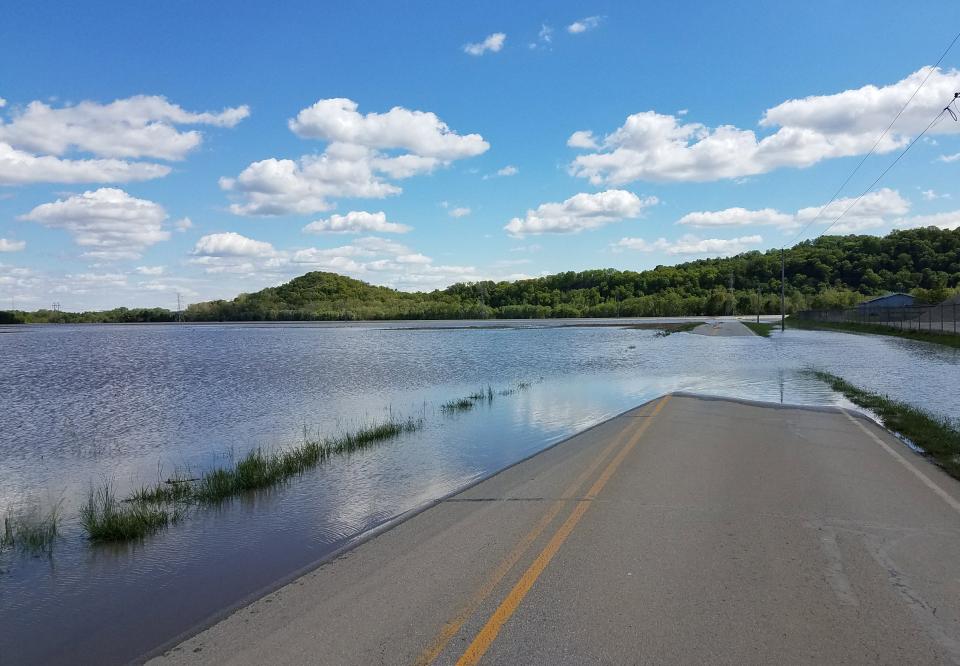Op/Ed: Warmer winters, more rain, fewer wetlands equals more flooding in Indiana
March roared in like a lion with heavy rains spread across Indiana. It left rivers swollen with runoff that threatened homeowners’ security and farmers’ livelihoods.
The changing climate in Indiana means warmer winter temperatures, and that means less snow. Instead, we’re seeing more rain, which is especially unfortunate in the winter. The ground is much less able to absorb the rain, often washing away precious topsoil in water that ends up flooding somewhere else downstream.
Fortunately, we have many ways to counter the effects of increased winter rain. More than a million acres of Hoosier farmland is under cover crops in the winter, which holds soil in place and enriches it naturally. Improved drainage practices can help mitigate flooding, too, with natural buffers in place to help absorb the excess rain.
But Indiana is doing a poor job using a most effective means for reducing flood impact — wetlands. Two years ago, the General Assembly stripped state oversight from most of the remaining wetlands in Indiana, making it easier for developers and others to destroy these natural sponges and worsen the effects of flooding. Despite an outcry from residents from all parts of the state denouncing the legislation, Senate Enrolled Act (SEA) 389 passed in 2021.

The one good thing from SEA 389 was the formation of a Wetlands Task Force that took its job seriously. Composed of experts in water management, the 14-member study commission met through last year and issued an authoritative report with 10 recommendations to improve wetland oversight and management in Indiana.
Wetlands, as the name suggests, are saturated areas like marshes, bogs and fens. They perform important ecological functions, such as filtering water and absorbing massive amounts of falling rain.
An acre of wetland contributes to Indiana’s bottom line in both dollars and common sense. Each year, according to the Indiana Department of Natural Resources, a wetland acre provides $248 worth of water purification, $2,270 worth of water storage and $1,155 worth of erosion prevention. Considering Indiana has about 800,000 acres of remaining wetlands, the total value is measured in billions of dollars.
Unfortunately, in Indiana less than 20% of the original wetland acreage remains and what’s left is under threat.
“The functions and values that wetlands provide are clear and significant,” the Wetlands Task Force report noted. “Indiana is at a point where the cumulative loss of wetlands is having a measurable negative impact on residents, particularly from a water quality and flooding standpoint.”
Among the task force’s 10 recommendations were admonitions to enact policies to deter development in wetlands, move more quickly to establish new wetlands as part of the state’s loss-mitigation effort and streamline permitting.
While no legislators introduced any legislation addressing any of the report’s recommendations, House Bill 1515 by Rep. Pat Boy, D-Michigan City, would have given landowners a slight tax break by classifying qualifying wetlands in a way that would reduce the property tax assessment. It died in the House, however, when it failed to get a committee hearing.
People and nature can thrive together, but Indiana’s public policy tends to treat nature as a resource to exploit. We do so at our own peril, as the recent flooding shows. Right now, we’re destroying our best natural solution to flooding.

March may or may not go out like a lamb this year. If we take care of our wetlands, it wouldn’t matter as much.
John Ketzenberger is director of government relations for The Nature Conservancy in Indiana.
This article originally appeared on Indianapolis Star: Wetlands — a vital part of Indiana's ecosystem are in jeopardy

